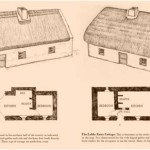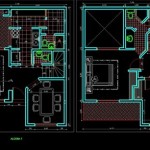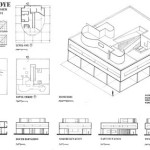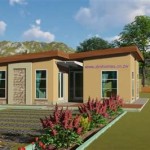Essential Aspects of Mid-Century Modern House Plans
Mid-century modern house plans embody the iconic architectural style of the 1950s and 1960s, characterized by clean lines, open spaces, and an emphasis on indoor-outdoor living. These timeless designs continue to captivate homeowners seeking a balance of form and function.
Key Features of Mid-Century Modern House Plans
1. Open Floor Plans:
Mid-century modern homes embrace open floor plans that seamlessly connect living spaces, creating a sense of flow and spaciousness. Living rooms, dining rooms, and kitchens often merge into one cohesive area, blurring the boundaries between public and private spaces.
2. Floor-to-Ceiling Windows:
Floor-to-ceiling windows are a hallmark of mid-century modern architecture, maximizing natural light and fostering a close connection to the outdoors. These windows bring the outdoors in, creating a serene and inviting atmosphere.
3. Integration of Nature:
Mid-century modern houses often feature patios, courtyards, and outdoor living areas that seamlessly extend the living space. Glass doors, sliding windows, and terraces invite nature inside, blurring the lines between indoors and out.
4. Flat Roofs and Cantilevered Structures:
Flat roofs and cantilevered structures are signature elements of mid-century modern architecture. Flat roofs create a sleek and streamlined silhouette, while cantilevered roofs extend over walls, providing shade and shelter.
5. Asymmetrical Lines:
Asymmetrical lines add visual interest and depth to mid-century modern houses. They can be seen in the arrangement of windows, doors, and rooflines, breaking away from traditional symmetry and creating a dynamic aesthetic.
Benefits of Choosing Mid-Century Modern House Plans
1. Timeless Style:
Mid-century modern house plans have stood the test of time, remaining popular for their timeless appeal. Their clean lines and open spaces create a classic and sophisticated look that will never go out of style.
2. Functional Living:
The open floor plans of mid-century modern houses foster a sense of community and encourage interaction. They are ideal for families and entertaining, providing ample space for both gathering and privacy.
3. Energy Efficiency:
Floor-to-ceiling windows and passive solar design techniques are often incorporated into mid-century modern house plans, maximizing natural light and reducing energy consumption.
Considerations for Selecting Mid-Century Modern House Plans
1. Lot Orientation:
Consider the orientation of the lot when selecting a mid-century modern house plan. Proper orientation can optimize the use of natural light and minimize heating and cooling costs.
2. Climate:
The climate of your region should also be taken into account. Mid-century modern house plans designed for warmer climates may not be suitable for colder areas.
3. Lifestyle:
The open floor plans of mid-century modern houses may not be suitable for everyone. Consider your lifestyle and preferences when selecting a house plan that accommodates your needs.
4. Site Conditions:
The topography and soil conditions of the lot should be carefully evaluated to ensure that the house plan is feasible and takes full advantage of the site's potential.

Mid Century Modern House Plans Houseplans Blog Com

Build A House With These Mid Century Modern Floor Plans Blog Eplans Com

Untitled Mid Century Modern House Plans Floor

Build A House With These Mid Century Modern Floor Plans Blog Eplans Com

Designing A Mid Century Modern Home Part Ii Wildfire Interiors

Mid Century Modern House Plan With Split Bedrooms And 3 Car Garage 70805mk Architectural Designs Plans

Home Planners Design N1921 Mid Century Modern House Plans Floor

Best Mid Century Modern Floor Plans And Designs Bybespoek

Mid Century Modern House Plans Mod Home Floor

Mid Century Modern House Plans Houseplans Blog Com








